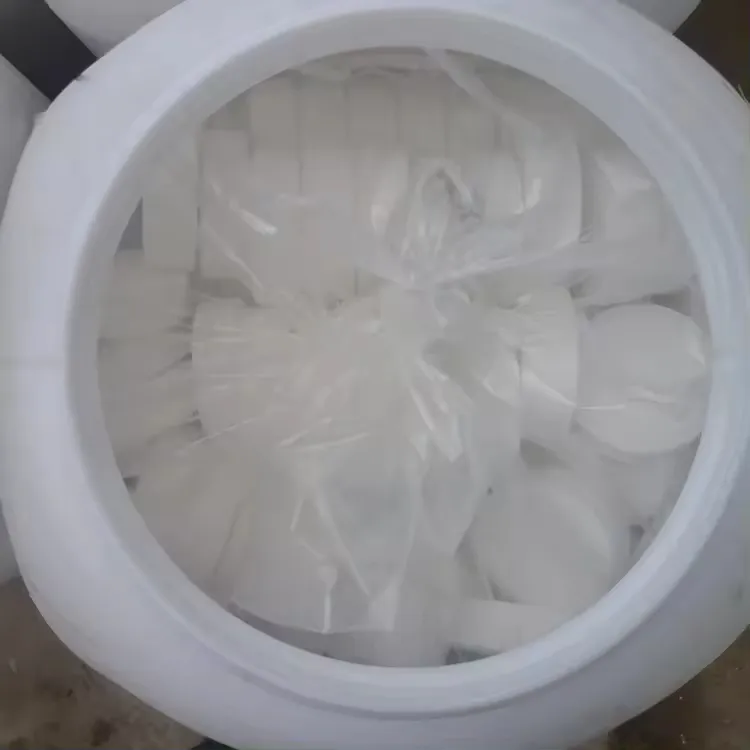



pam polyacrylamide msds
Understanding the Material Safety Data Sheet (MSDS) for PAM Polyacrylamide
Polyacrylamide (PAM) is a synthetic polymer widely utilized in various industries due to its exceptional properties. It is primarily used in water treatment processes, soil conditioning, and as a flocculant in mining operations. While PAM offers numerous benefits in these applications, it is essential to understand its safety profile, as outlined in the Material Safety Data Sheet (MSDS). This article aims to provide an overview of the key components typically found in a PAM MSDS and their significance in promoting safe handling practices.
Composition and Chemical Properties
The MSDS for PAM usually starts with the identification of the substance, its classification, and its chemical properties. Polyacrylamide is a polymer formed from the acrylamide monomer; thus, it bears properties derived from its chemical structure. PAM can appear as a white powder or granules and is primarily soluble in water. It is important to note that while PAM itself is generally considered non-toxic, acrylamide, which is used in its production, is a known neurotoxin and potential carcinogen. The MSDS highlights this hazard, recommending that users exercise caution and employ protective measures to minimize exposure.
Health Hazards
The health hazards associated with PAM and its components are a focal point of the MSDS. The document typically outlines potential routes of exposure including inhalation, skin contact, and ingestion. Chronic exposure to acrylamide may lead to neurological issues, while acute exposure may result in skin irritation or respiratory problems. The MSDS emphasizes the importance of understanding these risks, particularly for workers in industries that frequently handle PAM. By being aware of these hazards, safe handling practices can be instituted to protect personnel.
First Aid Measures
An essential section of the MSDS is devoted to first aid measures in the event of exposure to PAM or its derivatives. This includes instructions on providing immediate care such as rinsing the affected area with water in case of skin contact or seeking medical assistance if symptoms arise after inhalation. The clarity and availability of this information are critical in ensuring prompt and effective responses to potential incidents, thus minimizing health impacts.
pam polyacrylamide msds

Fire and Explosive Hazards
The MSDS also provides guidance on the fire and explosive hazards related to PAM. While PAM itself is not flammable, the acrylamide monomer presents some risks. The MSDS often details precautionary measures and firefighting techniques, recommending the use of extinguishing agents such as foam or dry chemical powder. Knowing how to respond to a fire involving PAM can significantly mitigate risks in industrial settings.
Handling and Storage Guidelines
To ensure the safe management of PAM, the MSDS outlines specific handling and storage practices. This includes recommendations like using appropriate personal protective equipment (PPE) such as gloves, masks, and goggles to prevent exposure. Additionally, it advises on storage conditions, such as keeping the material in a cool, dry place away from strong oxidizers. These guidelines are paramount in reducing the risk of accidents and ensuring worker safety.
Disposal Considerations
Lastly, the MSDS addresses disposal considerations. It is crucial for users to be aware of local regulations governing the disposal of hazardous materials, including PAM. Proper disposal methods help avoid environmental contamination and comply with legal standards.
Conclusion
The MSDS for PAM polyacrylamide serves as a crucial tool in promoting safety in workplaces where this substance is employed. By understanding its content—ranging from health hazards and emergency measures to proper handling and disposal practices—workers and employers can foster a safer environment. Continuous training and adherence to the guidelines provided in the MSDS are essential for mitigating risks associated with PAM and ensuring the well-being of all personnel involved.
-
Why Sodium Persulfate Is Everywhere NowNewsJul.07,2025
-
Why Polyacrylamide Is in High DemandNewsJul.07,2025
-
Understanding Paint Chemicals and Their ApplicationsNewsJul.07,2025
-
Smart Use Of Mining ChemicalsNewsJul.07,2025
-
Practical Uses of Potassium MonopersulfateNewsJul.07,2025
-
Agrochemicals In Real FarmingNewsJul.07,2025
-
Sodium Chlorite Hot UsesNewsJul.01,2025










